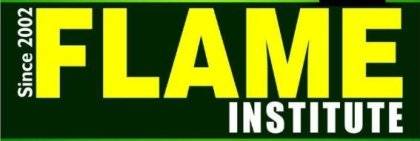a. fcc < bcc < simple cubic b. fcc > bcc >simple cubic c. fcc < bcc > simple cubic d. fcc < bcc > simple cubic Ans. b (15)
a. The coordination number is 12 b. It has 74% packing efficiency c. Tetrahedral voids of the second layer are coverd by the spheres of the third layer d. In this arrangement spheres of the fourth layer are exactly aligned …
a. hcp and bcc b. hcp and ccp c. bcc and ccp d. bcc and simple cubic cell Ans. b (6)
a. 4 : 2 : 1 b. 8 : 1 : 6 c. 4 : 2 : 3 d. 1 : 2 : 4 Ans. d (13)
(a ≠ b ≠ c) and all axial angles different from 90 º a. Monoclinic b. Triclinic c. Hexagonal d. Tetragonal Ans. b (10)
a. fcc > bcc > pc b. bcc > fcc > pc c. pc > bcc > fcc d. bcc > pc > fcc Ans. a (5)
a. Po b. Na c. Cu d. Ag Ans. d Explanation : Other than Ag. Pb and Hg also exist as simple cubic (9)
a. ABC 3 b. A 3 B12 C4 c. A 3 B12 C d. AB 12 C 3 Ans. c (34)
a. Polonium b. Copper c. Nickel d. Iron Ans. a (8)
a. 1 b. 4 c. 8 d. 6 Ans. c Explanation : In the diamond cubic unit cell there are eight corner atoms, six face centered atoms and four more atoms inside the structure. Number of atoms present in a …
a. 4 b. 6 c. 8 d. 10 Ans. c (4)
a. 2 b. 4 c. 6 d. 8 Ans. b (9)
CaF 2 is a. Face centred cubic b. Body centred cubic c. Simple cubic d. Hexagonal closed packing Ans. a Explanation : Space lattice of CaF 2 is face centred cubic (6)
a. 2√2r, 4r/√3, 2r b. 4r√3, 2√2r, 2r c. 2r, 2√2r, 4r/√3 d. 2r, 4r√3, 2/√2r Ans. a (6)
a. NH 3 b. C 2 H 4 c. C O 2 d. SO 2 Ans. a Explanation : In NH molecule the original appearance is repeated as a result of rotation through 120° Such a axis is said to be axis of three- fold …
a. Face centred cubic lattice b. Body – centred c. Simple cubic lattice d. Orthorhombic lattice Ans. b Explanation : Potassium (K) has bcc lattice. (10)
X – ions around A + ion in solid AX is given in the figure (not drawn to scale). If the radius of X– is 250 pm, the radius of A+ is a. 104 pm b. 125pm …
a. 1624 nm b. 0.1246nm c. 0.2164nm d. 0.1426nm Ans. b (16)
a. Lone pair of electrons b. Free valence electrons c. Cations d. Anions Ans. b Explanation : Graphite is a good conductor of electricity due to presence of free valence electrons in graphite each carbon is sp ^ 2 …
a. 1/2 (a) : √3/2(a) : √2/2 (a) b. 1 (a) : √3 (a) : √2(a) c. 1/2 (a) : √3/4(a) : 1 / √2/2 (a) d.1/2 (a) : √3/(a) : 1/ √2 (a) Ans. c (7)
a. 1 b. 2 c. 3 d. 4 Ans. d (10)
Molecule/ion Magnetic property (i) C6 H 6 …
a. SO 2 (solid) b. I 2 c. Diamond d. H 2 O (ice) Ans. c (4)
a. Quartz b. Tridymite c. Cristobalite d. Kieselguhr Ans. d Explanation : The amorphous form of silica is kieselguhr. (6)
a. 8 b. 6 c. 4 d. 2 Ans. a (6)
a. √3/4 (a) b. √3/2 (a) c. 2 √3 (a) d. 2/√3 (a) Ans. b (3)
α = β = 90 º and γ = 120 º is a. Cubic b. Hexagonal c. Orthorhombic d. Rhombohedral Ans. b (7)
a. 4 b. 6 c. 8 d. 12 Ans. d (4)
rc+ / r a- is a. 0. 732 – 1.000 b. 0.414 – 0.732 c. 0.225 – 0.414 d. 0.155 – 0. 225 Ans. c (6)
a. 0.732 r b. 0. 414 r c. 0. 225 r d. 0. 155 r Ans. b Explanation : For octahedral void r = 0. 414 R. (8)
a. The ionic crystal of AgBr has Schottky defect b. The unit cell having crystal parameters a = b ≠ c, α = β = 90 º γ = 120 º is hexagonal c. In ionic compounds having Freanked defect …
a. Molecule b. Ion c. Electron d. Atom Ans. c Explanation : Each point in a lattice is known as lattice point which is arranged in fixed stoichiometric ration Hence, existence of free electrons are not possible it is possible …
a. Hexagonal b. Orthorhombic c. Cubic d. Triclinic Ans. d Explanation : In a traiclinic crystal has no rotation of symmerty (9)
K+ and F – ions if cell edge is a cm a. 2a cm b. a/2 cm c. 4a cm d. a/ 4 cm Ans. b Explanation : Distance between K+ and F – = 1/2 x length of the …
a. Sodium b. Magesium c. Zine d. Copper Ans. a Explanation : Sodium (Na) is a body centred cube. (6)
a. 4 and 2 b. 9 and 14 c. 14 and 9 d. 2 and 4 Ans.d (7)
a. 8 b. 4 c. 2 d. 6 Ans. d Explanation : a cube has 6 faces so it is shared by 6 unit cells. (9)
